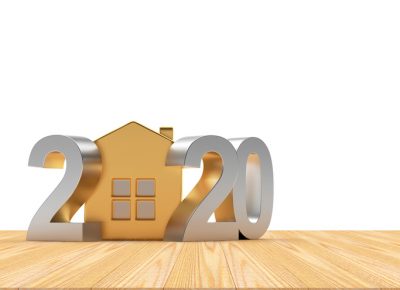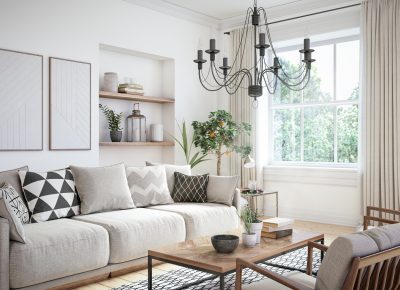Author Archives: vlm
Why Your Zip Code Matters to Contractors

Let’s explore how your zip code could be impacting the price you pay for home remodeling services. First time home buyers, who are purchasing an older home, get overwhelmed when they realize that in order to maintain their dream they might have to replace or update things like the roof, mechanical equipment, hot water tank, washer, dryer, kitchens and bathrooms.
In order to have been in a position to buy that first home you have had to achieve a certain amount of financial success. You want to be able to use those same skills that helped you achieve financial success when it comes time to selecting a contractor to perform work in your home.
One number that could be as equally important as your social security number is the zip code where your home is located. The dirty little secret that contractors won’t tell you is that the prices you are quoted to perform work is a lot of times based on your zip code. If you live in Central or South Jersey and live in Princeton, West Windsor, Hopewell, Pennington, Medford, Moorestown, Voorhees, Cherry Hill, Haddonfield and Marlton your quotes will generally be a minimum 25-30% higher than adjacent communities.
The one thing that all buyers and even existing homeowners share is the idea that if the price to complete work is not high, than the final product can’t possibly be good. The second little secret that contractors don’t tell you is that since the majority of worked performed in your home is done by nonunion labor, the labor and material costs, no matter what town you live in is the same. Therefore, the only difference in price based on zip code is how much profit the contractor wants to make.
Here is a simple way to estimate the accuracy of any estimate. Ask for a complete breakdown or the costs for the work to be performed. This should include material, labor overhead and profit. The larger the company you employ the great the overhead will be. Overhead and profit should represent about 25% of the total labor and material costs. Based on recent prices the material costs represent approximately 55% of the total material and labor costs and the labor represents approximately 45% of those total cost.
Stay healthy and safe and look for those great opportunities. Contact me to assist your search!

A Silver Lining for Home Buyers and Sellers

There is a silver lining for home buyers and sellers during the COVID-19 crisis. Not with standing the seriousness of the coronavirus and everyone’s effort to mitigate the consequences, if you are able to slow down, step back and look at the big picture you might realize a great opportunity awaits you for buying or selling a home.
Silver Lining for Home Sellers
The only market that has not gone down in recent weeks is the real estate market. Home inventory was low prior to the beginning of the spring market and the inventory now is even lower. This mean if you are a seller and your home has recently been updated you have a good chance to get your listing price. Better yet, since there are more buyers than available homes to purchase there is a good likelihood that buyers will get into a bidding war for a property. So, if you are a motivated seller with an updated home and are good with people putting on booties and using wipy dipes for their hands at your front door this is a great opportunity to sell your home in a short period of time.
Silver Lining for Home Buyers
There is also a silver lining for buyers. With the interest rates going down it is important for buyers to think about this rule of thumb. For every point that the interest rate goes down your buying power increases by $10,000 for every $100,000 you borrow. So if you are comfortable making a monthly mortgage payment based on $200,000 and the interest rate goes down by one point you are now able to purchase a home for $220,000 and still maintain the mortgage payment of $200.000.
If you are a buyer and your equities have taken a major hit and the amount of money you have for a down payment has shrunk, you might want to consider getting an FHA mortgage with a 3.5% down payment. Once the equity markets reach the pre-virus high levels you can refinance with a conventional mortgage with a larger down payment.
In the meantime, stay healthy and safe and look for those great opportunities. Contact me to assist your search!

Buyers Can Level the Playing Field in a Sellers Market

The recent trend in the real estate market has given a slight advantage to the sellers. This situation exists mainly because the current inventory is so low. Buyers do not like being in bidding wars for homes nor do we encourage buyers to even look at homes if they are still in attorney review. It is stressful for buyers having that carrot dangling in front of their faces for a home that they want but will probably not get.
We have begun using a strategy for buyers that helps to increase the chances that a home will not be sold out from under them during attorney review. If our buyers like a few homes that they can see themselves living in we will make offers to purchase. If we get to the point where there is a meeting of the minds on the purchase price we ask the sellers’ agent to request of their clients to stop considering other offers after the purchase price has been agreed upon though attorney review. In exchange for that consideration we will stop negotiating our offers on other properties. If the sellers are interested in making a deal in everyone’s best interest they will accept our request. Otherwise we suggest to our buyers that they move on to another property.
The old stock market quote goes something like this, “Bulls and Bear make a lot of money but pigs always get slaughtered”.
Eric’s Room By Room Review

We have created a handy document that will allow you to prep your home for resale. Just click the link below to download our Room-By-Room Review and make your home resale-ready.
How to Sell Your House for the Most Money In the Shortest Possible Time

Your imagination is the most powerful tool you have to improve the value of your property- and it’s free. Here’s how: Step out of your own shoes and step into your potential buyer’s shoes. Then take a good, realistic look at your house and property, and consider: Is it appealing? Can you imagine yourself living there comfortably? Or do you imagine yourself putting in a lot of work to make the house and property acceptable?
Most buyers are interested in three things about a property they’re considering
• Visual appeal (landscaping, spaciousness, cleanliness, color, lack of clutter)
• Maintenance (everything in working order, nothing to repair or paint)
• Safety (locks and deadbolts, burglar/fire alarm systems, busyness of the neighborhood)
If a potential buyer can’t form a good mental picture of living in your house – no sale! With this in mind, you’ll want to give your property a good, hard look from the outside in. You want to create a fabulous first impression so everyone will want to come inside.
What to Look For On the Outside
- Roof and gutters: When buyers look at your house from their car, about 30 percent of what they see is your roof. Be certain it’s in good repair.
- Landscaping: A well-manicured yard and a smooth, even driveway reassure potential buyers that you care about your property. A yard free of mud and weeds suggests a good sprinkler system and low maintenance.
- Paint and siding: Neutral colors and a clean appearance are important.
- Consider repainting or power-washing both your house and roof.• Porch or coverd patio: Make sure it’s clean and uncluttered.
- Fence: Fencing should be in good repair.
What to Look For On the Inside
• Kitchen: Regardless of your kitchen size, you can make it feel spacious: Remove appliances and gadgets from your counter tops and store them. Repair broken or cracked counters.
• Bathrooms: Replace faucets, medicine cabinet, and towel racks if necessary; be certain the bathrooms are spotless and fresh-smelling.
• Master Bedroom: Spaciousness and decor are important. Remove and store nonessential furniture.
• Flooring: An investment in new carpeting almost always increases the perceived value of a home. Select a neutral color of medium-grade carpeting and padding. Replace cracked and broken tiles.
• Wall covering: A fresh coat of paint can do wonders. Always use neutral or soft, warm colors. Avoid wallpaper.
• Personal touches: Eclectic personal touches may distract potential buyers.
Deciding What to Do First
The most important thing to think about first is this: Fix what you can see! Cosmetic changes, regardless of the cost, will make a world of difference when it comes time to sell. Whatever you saw when you put on your potential buyer’s shoes, that’s what you do first, from the outside in.
Keep in mind that you want the best return on your investment. When you make cosmetic changes, you maximize popular appeal. People will see what looks great, and they’ll picture themselves living there. Conversely if your home looks untended, people will imagine how much work they have to do- again, no sale!
The cost of such a project might frighten you; however, think about the cost of not doing it. If it costs $2,000 to repair your roof and gutters and you balk at the price, think again. The same roof repair will probably decrease your asking price by $4,000 when a buyer begins to negotiate. Ask your Realtor for guidance.
How to Stop Spending Money on Rent and Own a Home Instead

If you’ve always rented a place to live, buying a home can seem like a monumental undertaking. This report breaks down this home buying process into clear steps.
Seven Steps to Transition from Renter to Homeowner
Step One: Identify Your Needs and Wants
Begin your search by considering the kind of home you need and want. Write down your specific requirements, such as the number of bedrooms, size of yard, floor plan, location, schools, etc.
Step Two: Determine How Much You Can Realistically Afford
Consider your budget and financial obligations. Decide what monthly house payment you can really afford. Most mortgage consultants advise limiting your payment to no more than one-third of your net monthly income. If you’re unsure, contact your mortgage consultant to assist with
the calculations.
Step Three: Get Pre-Approved By a Mortgage Consultant
When you know in advance the amount of loan you can obtain, you can focus on searching for houses in your targeted price range. This can save you time when you find that perfect home, because sellers favor buyers who are pre-approved.
Experienced mortgage consultants can let you know what specific loan programs are best for you. By taking a look at your financial situation and credit history, a mortgage consultant will tell you if you can qualify for the home you want and will find a loan that best suits your needs.
For the approval process, you and your mortgage consultant will complete the required documentation and submit it to an underwriter. A pre-approval is an actual loan commitment from a mortgage consultant or lending institution. This means that you definitely qualify for a loan. Talk to your mortgage consultant about the costs and time involved to secure pre approval.
Step Four: Work With an Experienced Real Estate Consultant
You can learn a lot about consultants by talking to them about their experience. In a short time, you’ll be able to determine if they’re the right person to meet your needs.
Questions for Agents:
1. In what areas of town and price ranges do you specialize? (Keep in mind that some agents specialize in only one area or one price range.)
2. My objective is to buy a house by _goal? How will you help me achieve this
3. How often will you update me with new property listings?
Step Five: Tips for Successful House Hunting
1. Keep an organized record of your research. Write down comments about the homes you see. Keep track of your likes and dislikes and offer feedback to your real estate consultant. Some buyers are reluctant to tell an agent what they really think of a house; they think the agent might take it personally. Remember, the homes don’t belong to the agent!
2. Make sure your agent is aware of your time schedule and expectations. Do you like to look at one or two homes per session? Four? Eight? Discuss this with your agent.
3. Tell your agent about any homes you see that interest you and that you’d like to know more about. This includes homes you’ve “discovered” as you explore the area and those advertised in the newspaper and on the Internet.
4. If you like to spend time driving around by yourself looking at houses, ask your agent for a list of drive-bys- homes to consider first from the outside. Your agent can make appointments to show you the interior of the properties that appeal to you.
5. It’s important to know beforehand whom your agent represents. Some agents work only for the seller.
Step Six: Make a Purchase Offer
Work with your real estate consultant to determine the most appropriate purchase offer. Your consultant will present the offer on your behalf.
Step Seven: Save on Your Initial Investment and Monthly Payments
There are only two major investments to consider when buying a home. These are the initial investment, which includes the down payment and closing costs, and the monthly payment, which includes principal, interest, taxes and insurance. Here are some things to consider.
Initial Investment
1. Choose a low or zero down payment loan. You don’t necessarily have to put 20 percent or even 10 percent down. You can pay 5 percent, 3 percent, or even zero down on some loans.
2. Some Lenders have programs to cover your closing costs. Ask your mortgage consultant about them.
3. As part of your offer, ask your real estate consultant about the seller’s paying some of your closing costs.
4. Shop around for your homeowners’ insurance. A little comparison shopping can save you money.
5. You may be able to deduct money paid for discount.points from your gross income before computing your tax. See a CPA for more information.
Monthly Payments
1. Get a loan that doesn’t have monthly mortgage insurance premiums. You may be able to reduce or eliminate them by paying a little more at closing. By putting 20 percent or more down, you can eliminate them entirely. Talk to your mortgage consultant about other ways to eliminate monthly mortgage insurance payments.
2. Take advantage of rate lock programs that are currently available. You can generally lock in a low interest rate 30 to 45 days in advance. Secure an appraisal before you lock in a rate.
3. Remember that interest payments on a primary residential mortgage are fully deductible.
Your property taxes are also deductible. Tax rates definitely favor homeowners. Be sure to declare both your mortgage interest and property taxes when you file your income tax returns.
4. Consider an adjustable rate mortgage. Adjustable rate mortgages (or ARMs) can be as much as 3 percent lower than fixed rates. Only choose this option when you’re in a position to refinance, should the adjustable rate rise sharply.
7 Dangerous Home Buying Mistakes

Buying a home is one of the most exc i ting events in a person’s life. whether it’s the first home or the fifth one; however. it can also be one of the most stressful. Purchasing a home should be regret-free and anxiety-free.
Avoiding these 7 common mistakes when buying a home can help lower your stress and help you focus more easily on possibly the single largest purchase of your lifetime.
Mistake #1- Not Being Prepared
When you consider the scope of the purchase. it’s surprising how many people haven’t done sufficient research.
Research your buying power – It’s easy to get a cursory idea of what you can afford through some websites found online. Many have calculator s that allow you to input your salary and debts.
Better yet. sit down with a mortgage professional before you go house- hunting and find out exactly what you can afford.
When it comes to making an offer on a home. sellers are far more interested in offers that come from pre-qualified buyers. They know the sale will. in all likelihood, go through and that there won’t be any unforeseen problems at the last minute.
Mistake #2- Too Long Term
There is danger in buying a home that’s not right for you because you are planning too far in advance.
Your lite can change pretty dramatically in the space of a few short years. You may experience a change in health. family or financial status tor example.
While you can’t plan for everything. you need to consider that you may have to sell the home unexpectedly in the not-so distant future. and the house must have some resale value.
Mistake #3 -Waiting Too Long
It’s a big decision and only a foolish person would enter i nto it lightly. But it’s just as easy to let caution get the better of you. The real estate market isn’t fixed. it can change dramatically.
Some markets are very tight, with few homes available- a tight market probably won’t get better in the next year.
The National Association of Realtors estimates that the appreciation rate in most markets will be at least 4 to 6 percent.
Looking at everything before making a decision. it’s tempting to think that the grass is always greener somewhere else. but you may find that the first home is the best home for you.
If you wait. that home may not be available later. Don’t rush into a decision. but if a house feels right. contact a real estate agent right away.
Mistake #4- Single Features
If you develop microscopic vision when looking at a house. it’s possible to overlook far greater potential problems.
Interior Decorating– Don’t get caught up in decorating features. These are all easy features to change. However. the layout and floor plan of the home isn’t easy to change.
Exterior– It’s important to have a home with nice curb appeal. but again. you can change that later. It’s far easier to change landscaping than it is to rip out walls or add-on to a home to try and make it livable.
Price– Don’t focus completely on the price. Most buyers go out with an idea that they will only spend a fixed amount. A budgeted amount is often the first criteria when it comes time to evaluating homes.
Mistake #5- New Construction
Many buyers focus on existing homes and don’t consider newly constructed homes. It’s hard to see the final vision of a planned home community, especially when touring through a development that is merely empty lots and partially built homes.
However. these homes have great appreciation value. especially when you get in during the initial phases of the development. before the model homes have been built and the developer has invested a lot of money in marketing the community.
Mistake #6- No Real Estate Agent
Many people start looking at homes by driving by a home for sale and getting the number off the sign. or visiting an open house.
While that’s a great way to get a feel for the market. it’s also easy to make a commitment to buying a home that doesn’t necessarily reflect your best interests.
Working with a real estate agent can save you time and money.
Mistake #7- Rushing the Process
Let’s say you found your dream home and put in an offer. What happens next?
If your sale follows most standard sales. the home is inspected and appraised, the information is shared with the buyer (via the agent) and the mortgage company. Title mortgage company processes the loan agreement, the buyer and seller sign off and the home is yours!
However. in highly competitive markets. some buyers waive the home inspection so that the loan can go through more quickly.
So what’s the problem? If there are defects that the home buyers discover later. they have no recourse – the house is theirs. warts and all.
In a nutshell. be patient. It’s at this stage. when people try to rush the process. that some of the biggest and most costly mistakes can take place.

